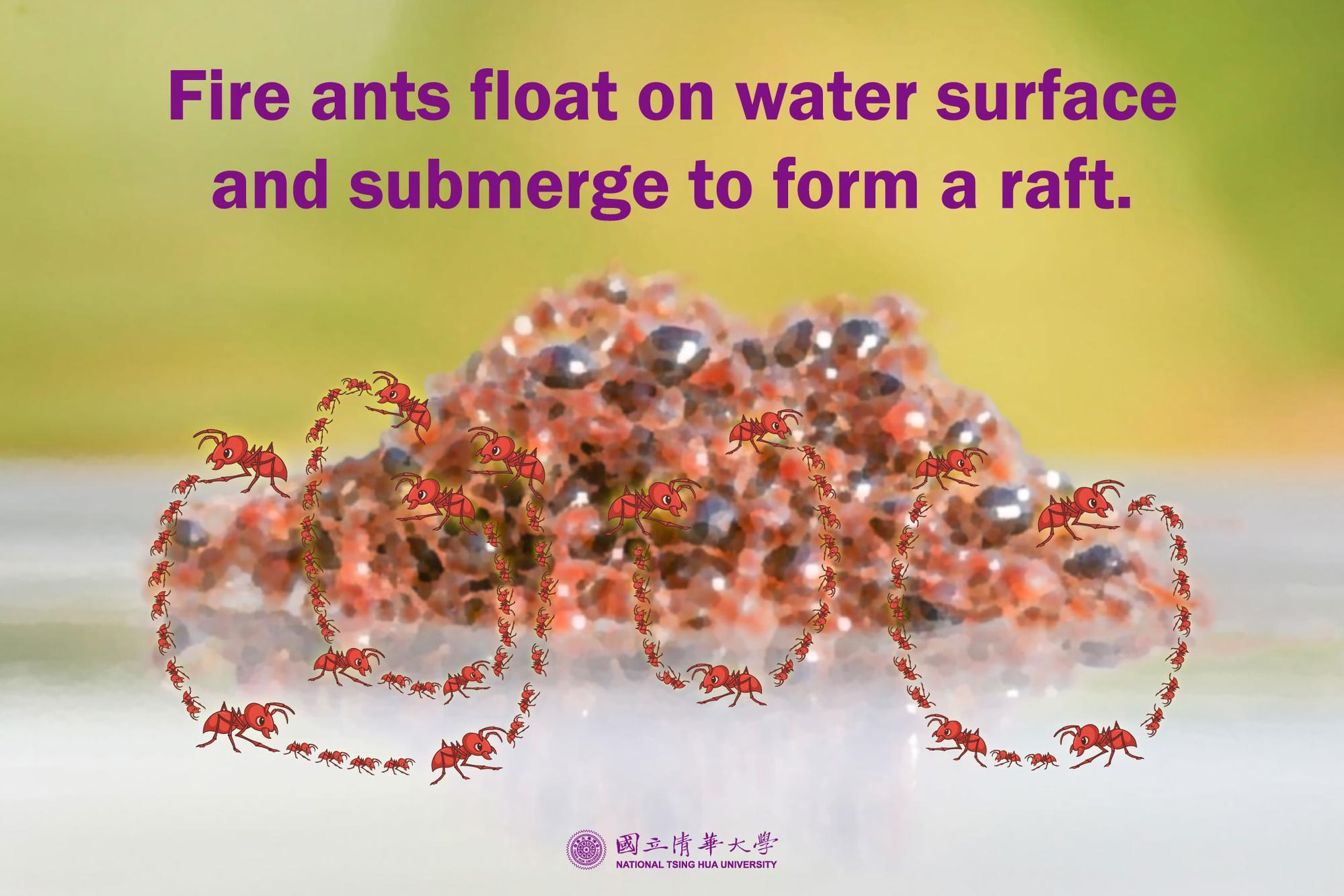2024.03.13
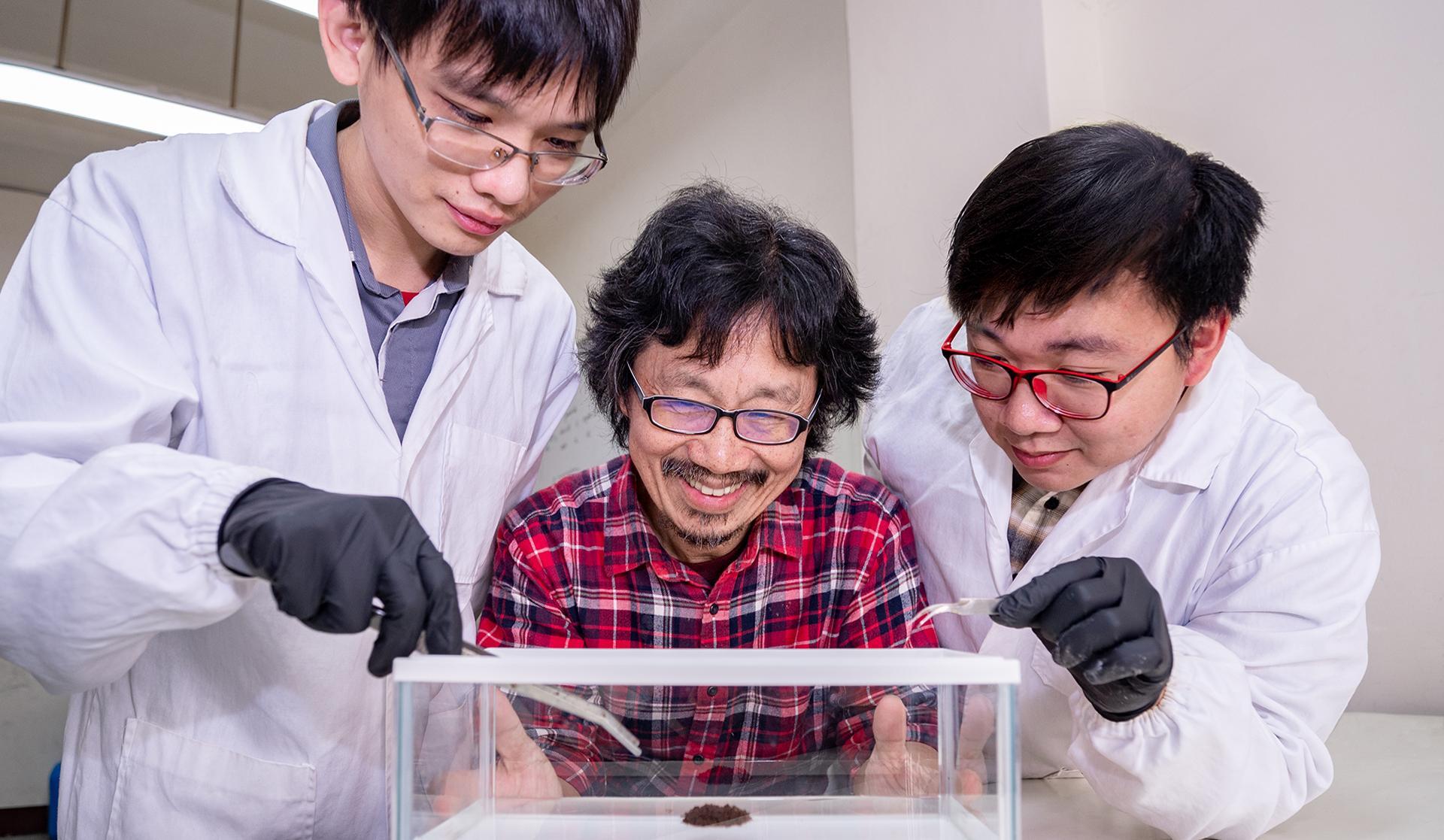
Professor Tzay-Ming Hong (洪在明) (center) from the Department of Physics at NTHU guides graduate students Chung-Hao Chen (陳中皓) (right) and Ting-Heng Hsieh (謝廷珩) (left) in researching the causes of fire ant rafting.
Professor Tzay-Ming Hong (洪在明) from the Department of Physics at National Tsing Hua University (NTHU) in Taiwan has challenged the previously held notion that fire ants' ability to float on the surface of water is solely due to the surface tension. He proposed that the rafting behavior is an active self-repair mechanism, possibly enabled by pheromone-mediated connections, allowing the fire ants to grip each other and form a raft.
When floodwaters submerge fire ant colonies, the fire ants gather and float on the water surface. This was previously believed to be due to surface tension, and likened to the clumping of breakfast cereal in milk, commonly known as the "Cheerios effect."
Typically, materials tend to narrow and thin out when stretched, like dough being pulled thinner. However, research led by Professor Hong in soft matter studies discovered that even when stretched, fire ant rafts maintain their width and thickness. This is achieved through the ants' remarkable ability to adjust, mobilizing the upper layers to fill in gaps in the lower layers, thus preserving the raft's dimensions.
Such resilience highlights properties that are difficult to attain in artificial materials. In the future, applying this insight to new biomimetic elastic materials could pave the way for the creation of micro robots resembling those seen in science fiction, capable of freely transitioning between liquid and solid states while possessing self-repair capabilities.
Given the immense interest in this research topic, its publication in Physical Review E in January immediately captured scientific attention. The intriguing mechanism of fire ant rafts, resembling both solids and liquids, piqued the public's curiosity, resulting in coverage by international media outlets such as CNN and Le Monde in the US, France, Germany, and the UK.
Upon hearing a biologist's lecture attributing fire ant rafting to surface tension, Professor Hong harbored doubts. To investigate further, the research team collaborated with the Hsinchu City Government's Department of Economic Development, and ventured out to infested areas to gather ants for their experiments.
Master's student Yu-Chuan Cheng (鄭又銓) also discovered fire ants in his grandmother's fields and asked his mother, Mei-Yun Wan (萬美雲), to deliver them to NTHU, much to the team's gratitude.
The research team conducted experiments, finding that other ant species and dead fire ants do not raft on water, and that live fire ants can even raft on a dry vibrating platform. This result overturns the idea that surface tension alone causes fire ants to raft.
The team discovered that when fire ant colonies are flooded, the ants use their mandibles and legs to grasp each other, forming a multi-layered web-like structure that floats on the water surface like a raft.
Further scrutiny revealed that worker ants on the raft move from the center to the periphery, taking turns descending into the water and staying on the raft's surface, resembling the cyclical movement of a treadmill. Meanwhile, the queen ant, eggs, larvae, and other "passengers" remain aboard the raft, drifting in search of dry land.
Moreover, when the raft surface is damaged, worker ants automatically fill in the gaps. This led Professor Hong to speculate that understanding the fire ants' rafting survival mechanism could lead to the development of active self-healing biomimetic materials.
These materials would exhibit properties similar to those of both solids and liquids, and be capable of self-repair and facilitating collective migration. Such qualities would make them suitable for the fabrication of artificial ligaments, for example, which must be resistant to breaking when stretched.
As a physicist, Professor Hong embarked on his first venture into biology after three decades of research, presenting himself and his students with challenges. Their initial obstacle was obtaining live fire ants. Upon hearing reports of fire ant infestations in Hsinchu, they formed ant-catching squads.
However, they initially caught the wrong ants. "Later on, we didn't rush to dig up ant nests at the site. Instead, we would catch a few and toss them into the water to see if they would form rafts or be drowned. Those were the fire ants we were after," Hong chuckled.
Ph.D. student Chung-Hao Chen (陳中皓), the main designer of the fire ant experiments, bravely endured their stinging bites. Despite experiencing pain akin to being burned and enduring swollen welts for a week, after two years of research, he developed immunity to fire ant bites, in a manner akin to mastering a technique making one impervious to venom found in martial arts novels.
Master's student Ting-Heng Hsieh (謝廷珩) became an expert in fire ant care. Initially, feeding them French flies and leftovers led to high mortality rates. But after switching to a diet of dried crickets, mealworms, and sugar water, along with constructing gypsum shelters to maintain humidity, the fire ants thrived during the experiments.
The mystery of how fire ants communicate to form rafts remains unsolved. Professor Hong speculates that fire ants may have evolved to secrete pheromones when encountering danger, which served to facilitate the spread of warning signals and the formation of organizational connections. To fully decipher this biological messaging system, further investigation by biologists is necessary.
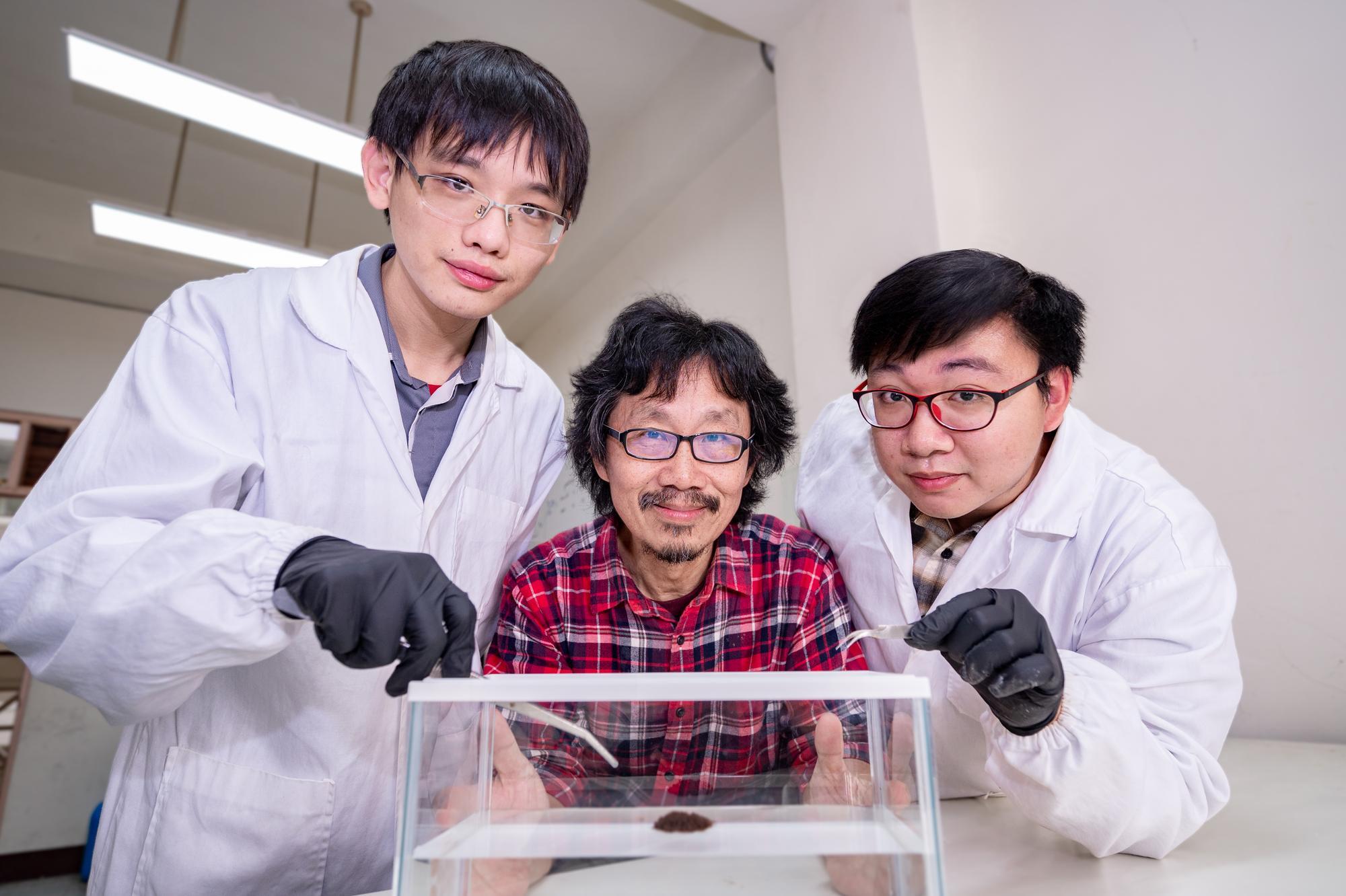
Professor Tzay-Ming Hong (洪在明) (center) from the Department of Physics at NTHU guides graduate students Chung-Hao Chen (陳中皓) (right) and Ting-Heng Hsieh (謝廷珩) (left) in researching the causes of fire ant rafting.
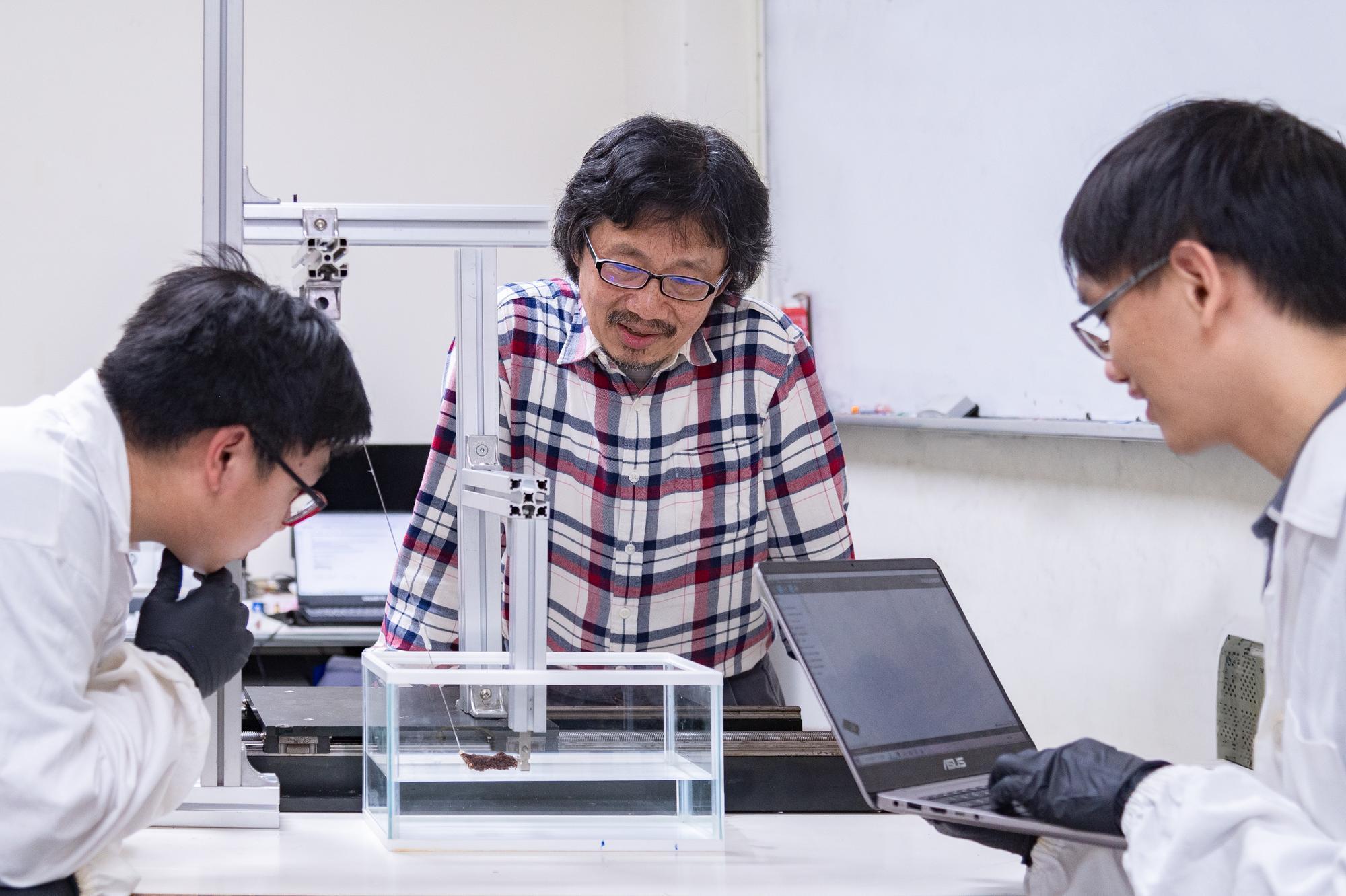
Professor Tzay-Ming Hong (洪在明) (center) from the Department of Physics at NTHU guides graduate students Chung-Hao Chen (陳中皓) (right) and Ting-Heng Hsieh (謝廷珩) (left) in researching the causes of fire ant rafting.
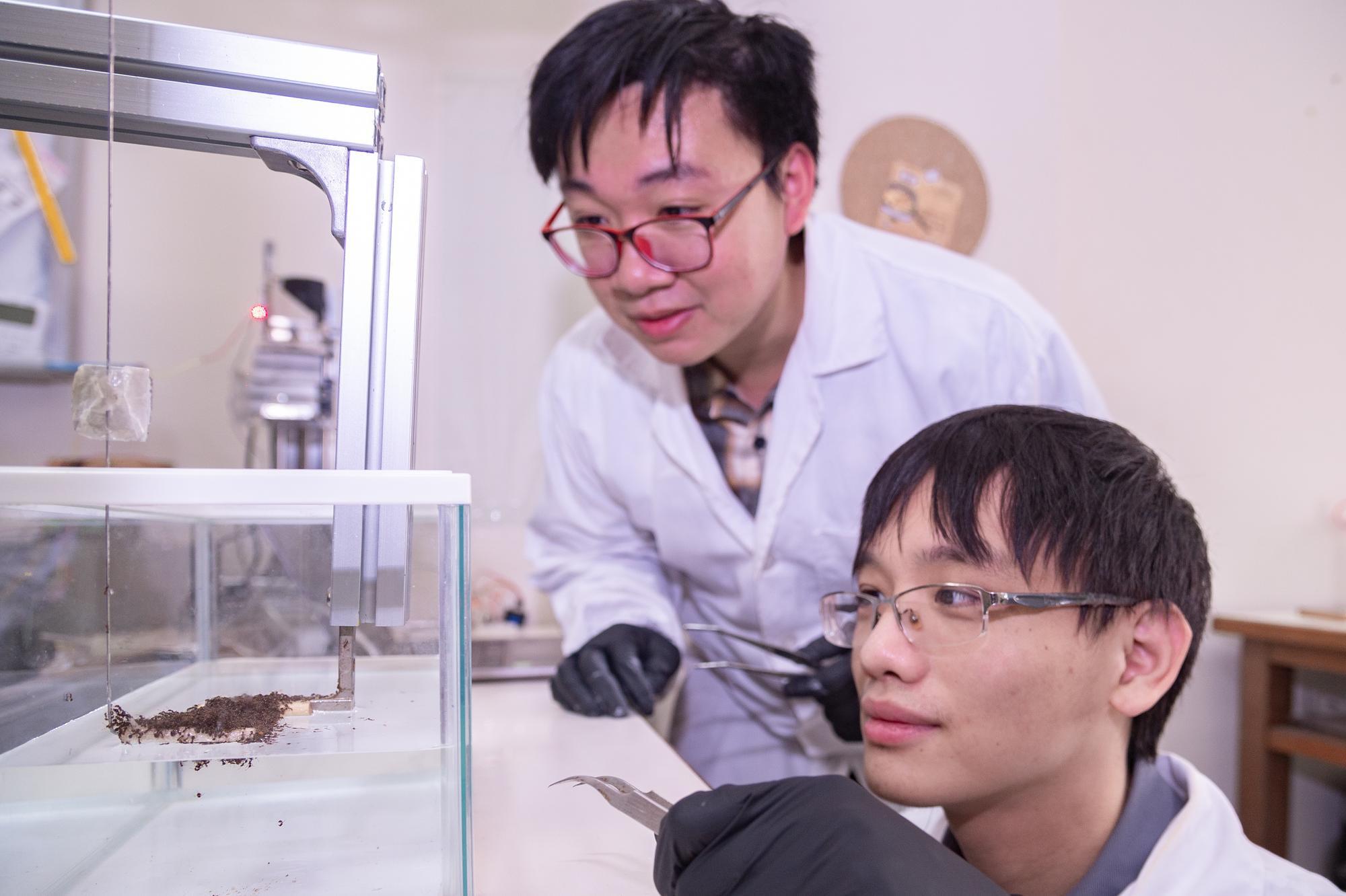
Ph.D. student Chung-Hao Chen (陳中皓) (left) and Master's student Ting-Heng Hsieh (謝廷珩) (right), from the Department of Physics at NTHU, observe fire ants rafting on the water's surface.
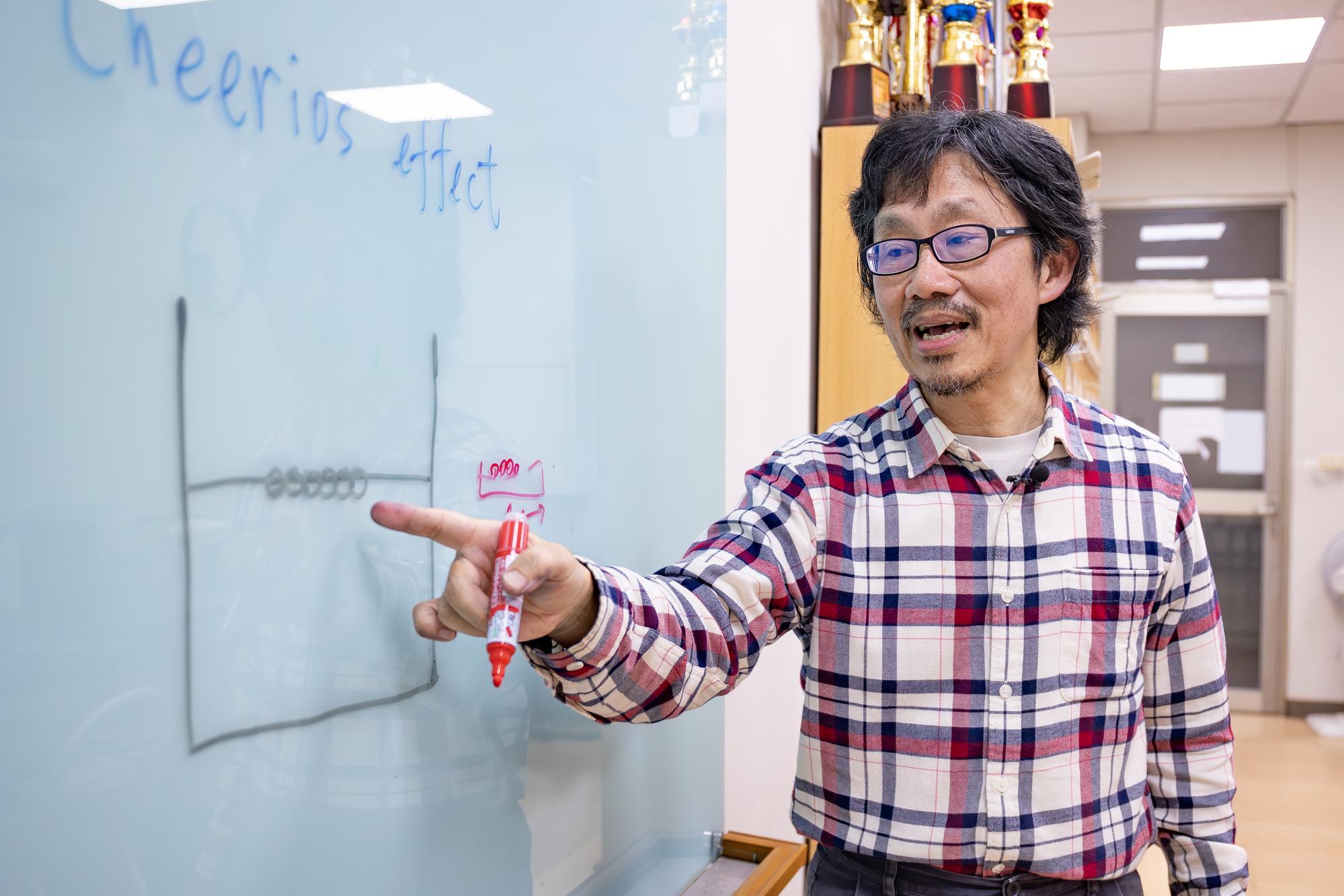
Professor Tzay-Ming Hong (洪在明) from the Department of Physics at NTHU clarifies that fire ant rafting is not solely attributable to surface tension.
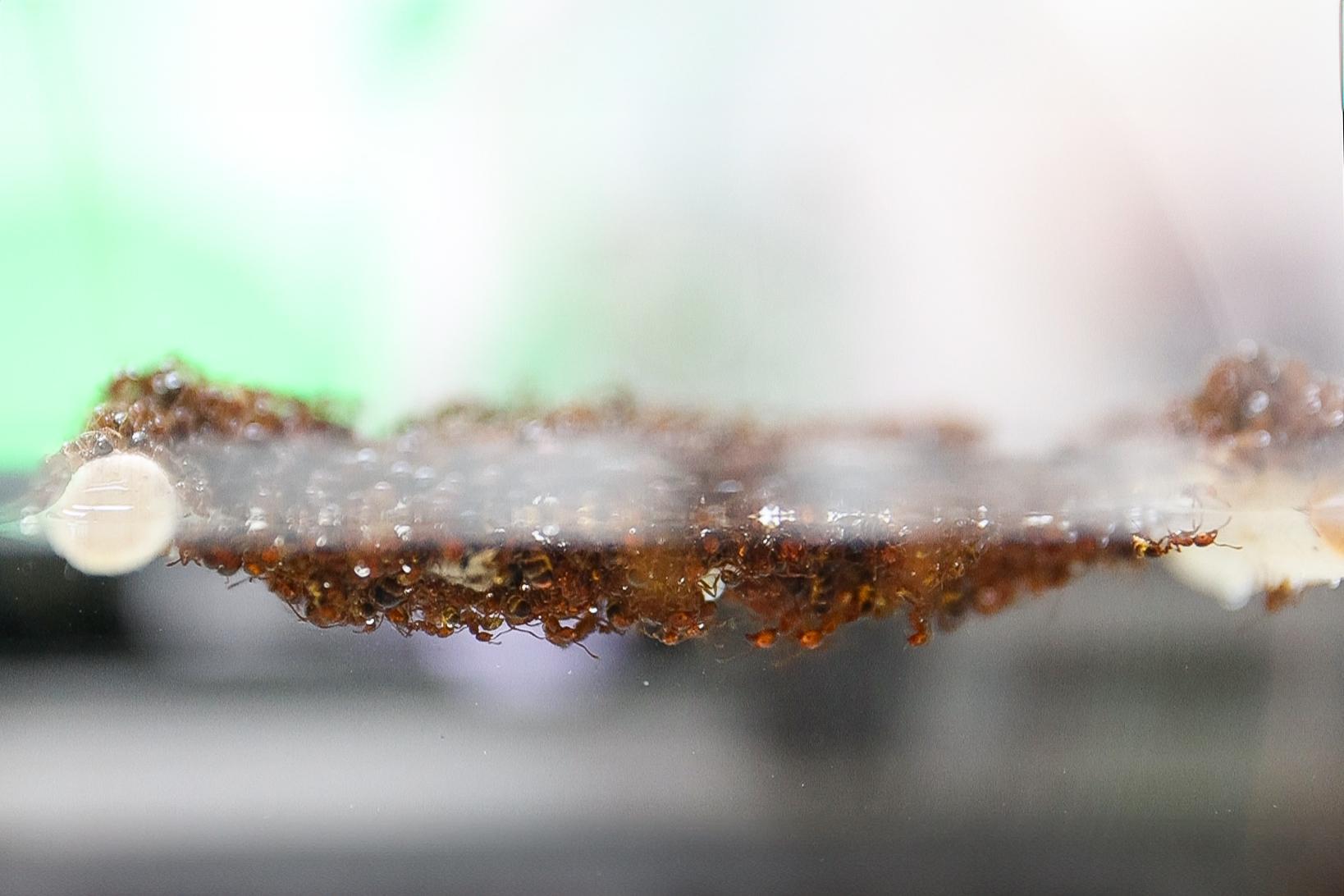
The fire ant colonies grasp each other with their mandibles and legs to form rafts on the water's surface.
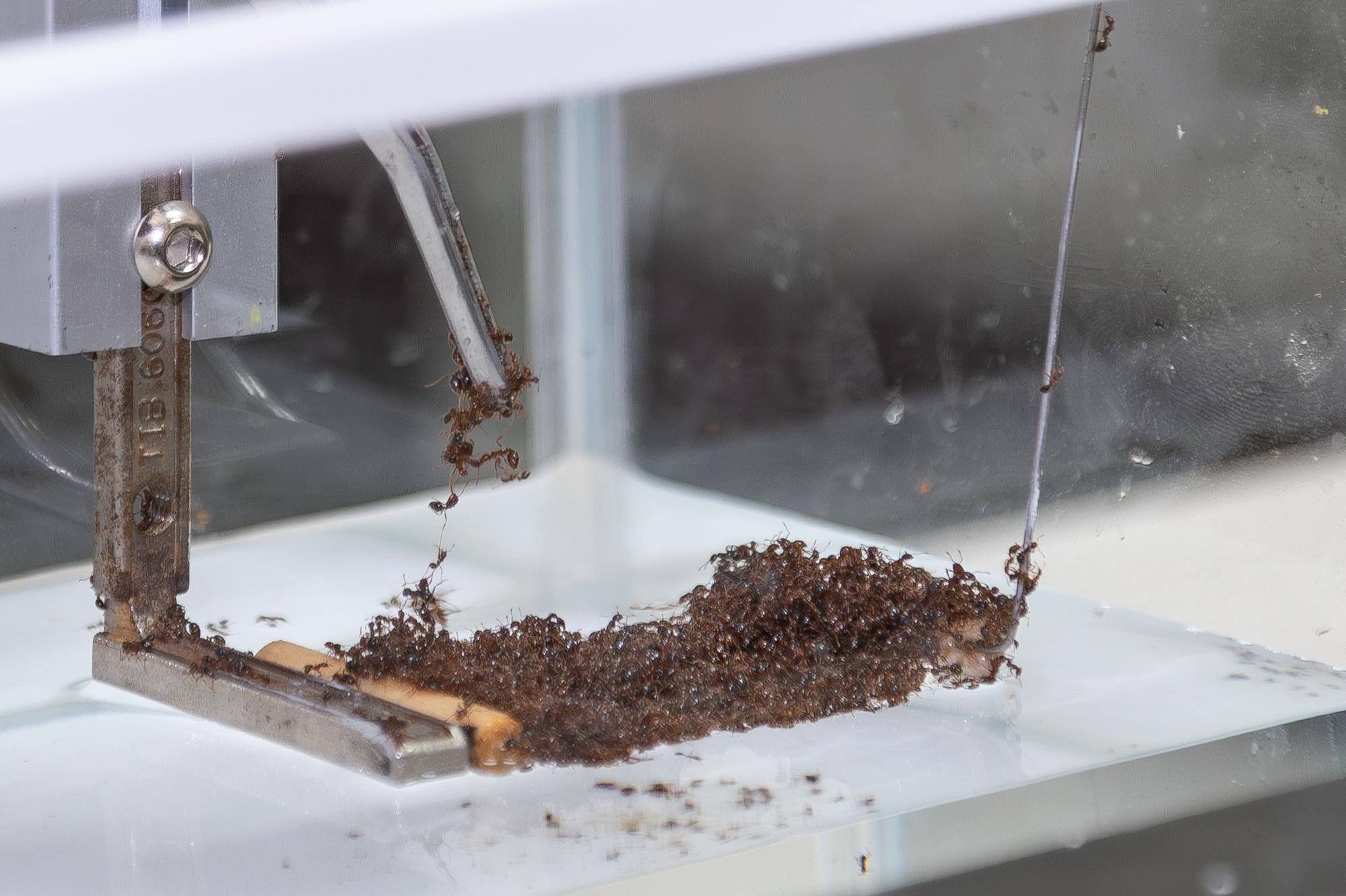
The research team at NTHU found that fire ant rafts do not become narrower or thinner when stretched.
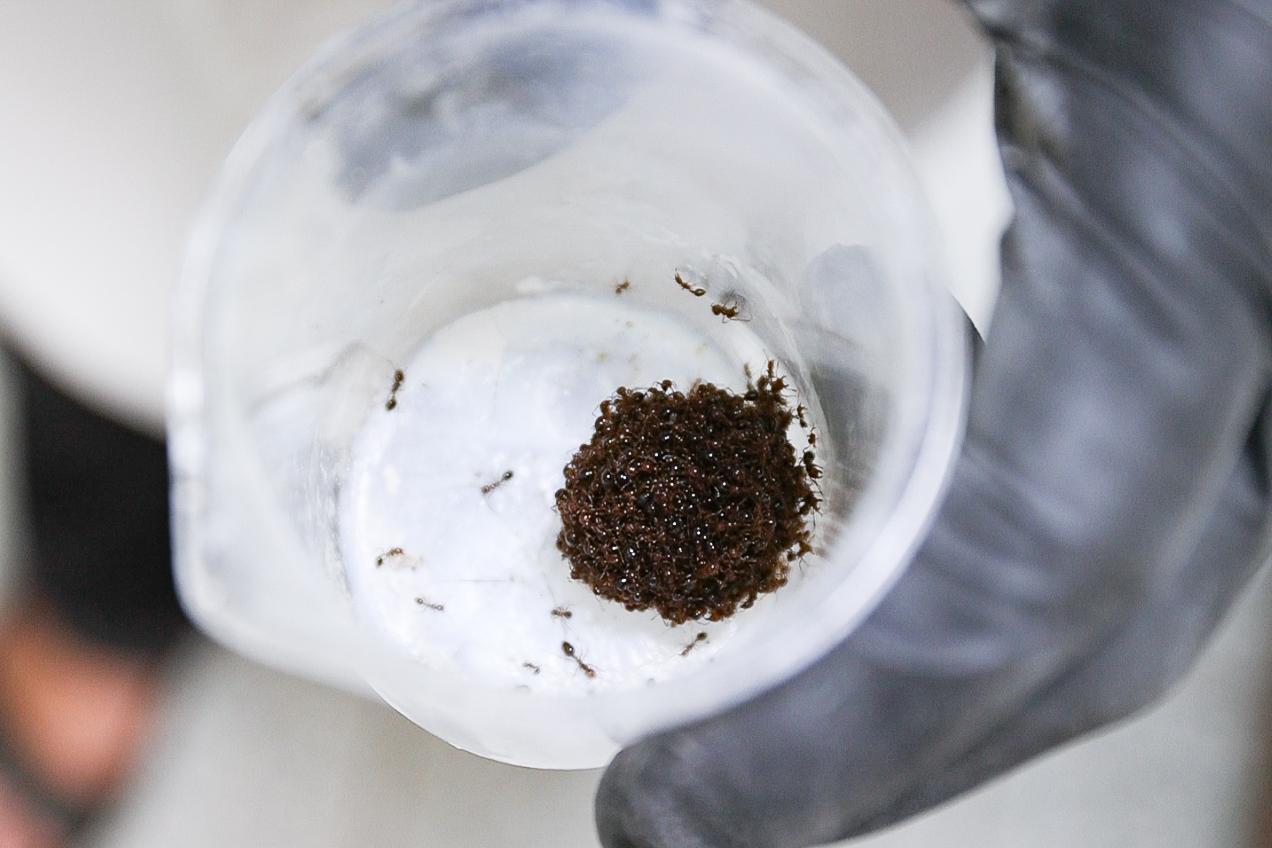
When sensing danger, fire ants tightly grasp each other, forming spherical or raft-like structures.
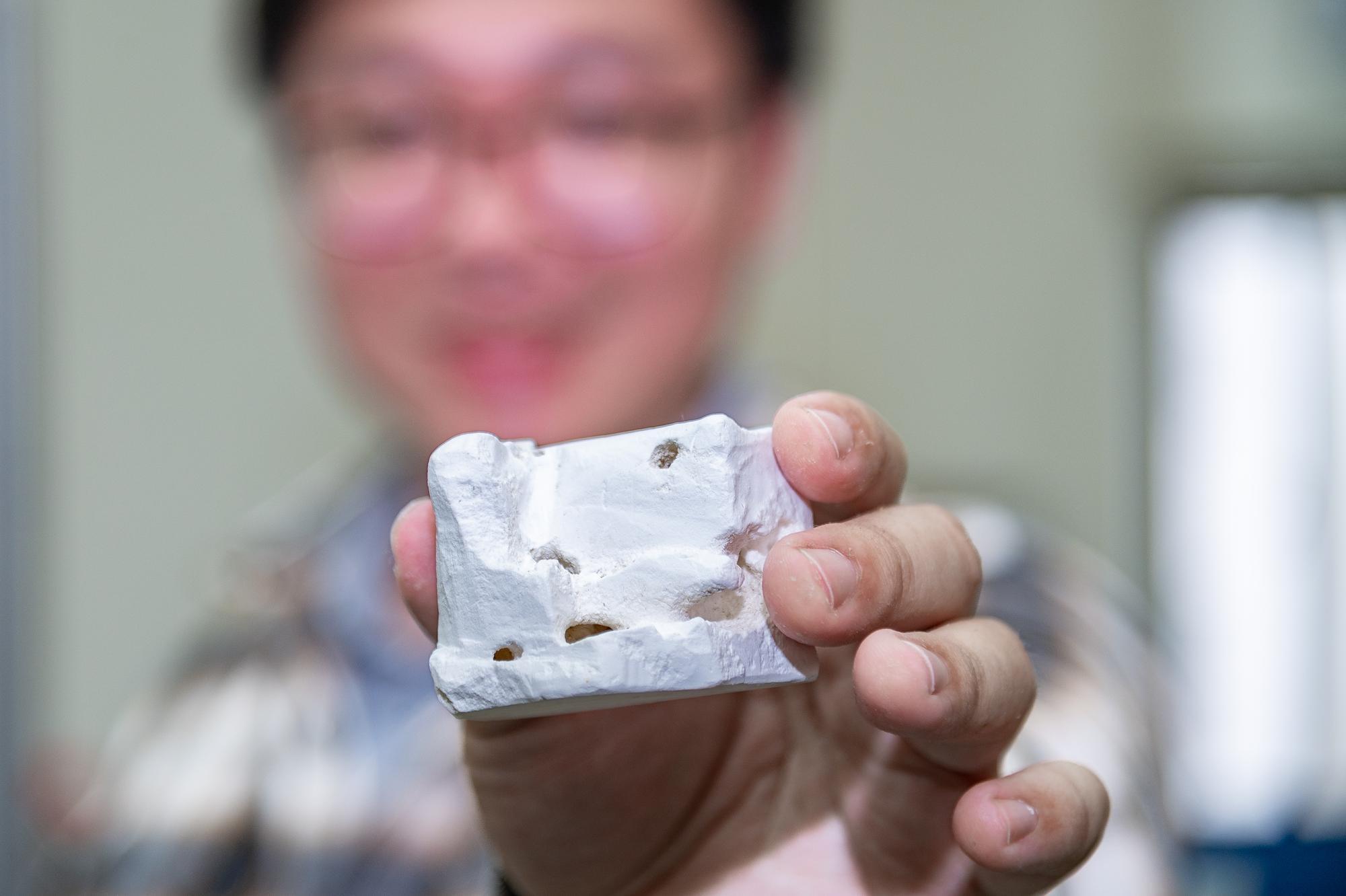
Ph.D. student Chung-Hao Chen (陳中皓), from the Department of Physics at NTHU, constructs gypsum shelters to provide fire ants with habitats that maintain moisture.









